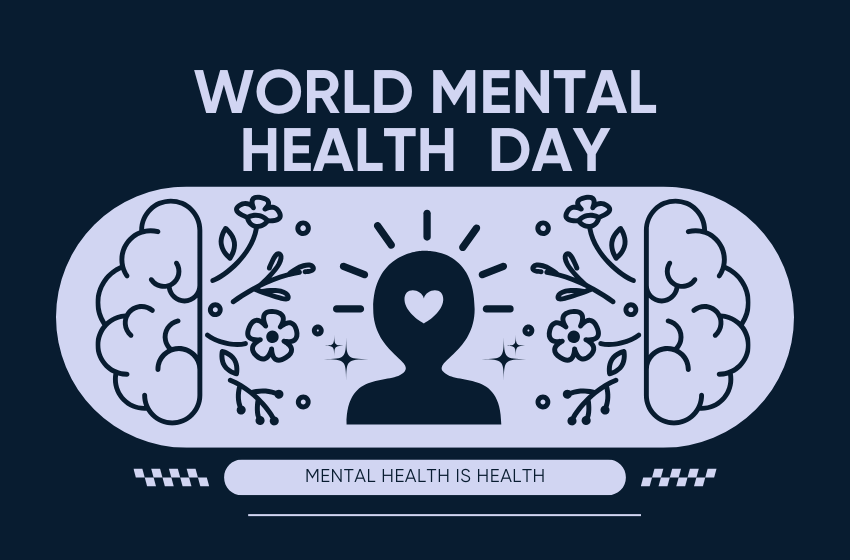It’s Okay to Not Be Okay: Rethinking Mental Health Support in Academia

“Mental health problems don’t define who you are. They are something you experience. You walk in the rain and you feel the rain, but, importantly, you are not the rain.”
—Matt Haig, author of Reasons to Stay Alive
Ask any academic and they won’t be surprised that mental health struggles in the industry aren’t just common, they’re widespread—and this is backed by data. Multiple studies reveal that individuals in academia often experience significant psychological distress during their training, with mental health struggles contributing to some students interrupting or abandoning academic careers altogether. A recent study from India found that close to 70% of university students report moderate to high levels of anxiety, while nearly 60% expressed signs of depression. It’s not just students, even staff and faculty are similarly impacted. It is also reported that mental health concerns aren’t simply a matter of vulnerable individuals choosing graduate school, with research showing that mental health deteriorated specifically during the doctoral years, with medication use climbing significantly throughout the program before declining post-graduation. This pattern suggests that structural elements of doctoral training itself—rather than pre-existing conditions among students—are largely responsible for the crisis, pointing to the urgent need for systemic reforms in how graduate programs operate.
Despite the concerning trends, many in academia don’t actively seek support, leaving a silent majority to struggle alone. But why is that? On World Mental Health Day 2025, we’re exploring why academics often hesitate to seek mental health support—and what steps can help change this culture.
1. Stigma and lack of mental health literacy. Stigma associated with mental health concerns is well documented, and especially in highly competitive environments like academia, admitting to experiencing such struggles may be embarrassing, seem like a weakness, or may cause students and faculty to worry about being judged by peers.
2. Limited institutional support. Not all institutions or universities offer accessible, confidential, or specialized mental health services. And when services are available, their capacity may fall short of actual demand, with students who reach out for help facing long waiting periods, brief or generic interventions, or support services that may not understand the particular stressors of research life. Doctoral candidates, in particular, report that available services can rarely address the realities of their experience, such as the instability of funding, constant publication pressure, and extended periods of isolation.
3. Time constraints also play a role. Academics, whether researchers or faculty, often have packed schedules, juggling multiple responsibilities and deadlines related to research, teaching, and administrative responsibilities. This can be overwhelming and often may not leave them with adequate time to go get mental health support even when with the recognition that they could benefit from support. So, mental health just keeps sliding down the priority list.
4. Finally, academic culture itself. Overwork and stress are often normalized or sometimes even glorified as badges of honor, reinforcing the idea that struggling is part of the job. In this environment, admitting to mental health challenges can feel professionally risky, and many choose to endure silently rather than seek support. Then there’s the relentless pressure to constantly achieve, to be impressive, to have major breakthroughs, creating imposter syndrome and self-doubt when one is not able to constantly excel.
The following are some strategies that can help institutions build comprehensive support systems and integrate wellbeing into the fabric of university life.
1. Creating ongoing dialogue about mental health throughout campus. As the shame or that one may feel about their struggles poses an obstacle to students seeking support, institutions can tackle this by weaving mental health into everyday campus conversations. This can include outreach through every possible touchpoint—official communications, digital platforms, classroom settings, clubs and organizations, etc. When students consistently see and hear about psychological wellbeing as part of regular campus life, it becomes an ordinary topic rather than something to hide. Strategic communication can help reinforce institutional support, making students feel more comfortable accessing resources.
2. Co-creating solutions with campus stakeholders. Effective initiatives require input from students, faculty, and staff. Surveys, focus groups, and listening sessions can help identify different needs of different groups, which can help design services and refine them based on user feedback, which improves effectiveness and demonstrates institutional commitment. When people feel heard, they’re more likely to engage with available resources.
3. Restructuring how mental health services are delivered. Mental health support exists on a spectrum, and the resources and help should match different individuals where they actually are and in that spectrum. Universities are implementing differentiated support systems where intervention intensity matches actual need. For instance, students facing critical situations receive comprehensive clinical attention, while those experiencing challenges adjusting to academic or social environments can access skill-building workshops, group-based interventions, or peer-facilitated support networks. Institutions are also modifying access to go beyond scheduled appointments to offer same-day consultation sessions and crisis response teams available at any hour.
4. Empowering academic staff to spot early warning signs. With adequate training and preparation faculty members can help recognize behavioral shifts that may signal student distress. The goal isn’t transforming professors into clinical practitioners but rather equipping them to notice concerning patterns and connect students with appropriate resources.
5. Implementing flexible academic structures. Small adjustments to course management can significantly reduce student stress. Examples include providing extended submission windows that allow students to coordinate competing demands, scheduling deadlines during reasonable hours, and incorporating wellness-oriented assignments and activities when feasible. Some instructors have introduced designated mental health breaks or activities designed to reduce isolation and promote engagement with their surroundings.
6. Leveraging collective support systems. Recognizing that social connection is fundamental to wellbeing, institutions can invest in both facilitated group interventions for specific challenges (social anxiety, trauma, eating disorders) and less formal gatherings in casual campus spaces that reach students who avoid clinical settings. Since students typically turn to friends first, universities can also train peer volunteers in supportive communication and active listening while ensuring they know when to escalate concerns to professionals. When universities alone can’t provide the needed support services, they can partner with communities and organizations to extend available support beyond institutional capacity.
While some institutions have already started taking steps to shift their frameworks to better address academic mental health needs, a cultural change requires rethinking how the wellbeing of students and academics is understood and integrated across campus.




